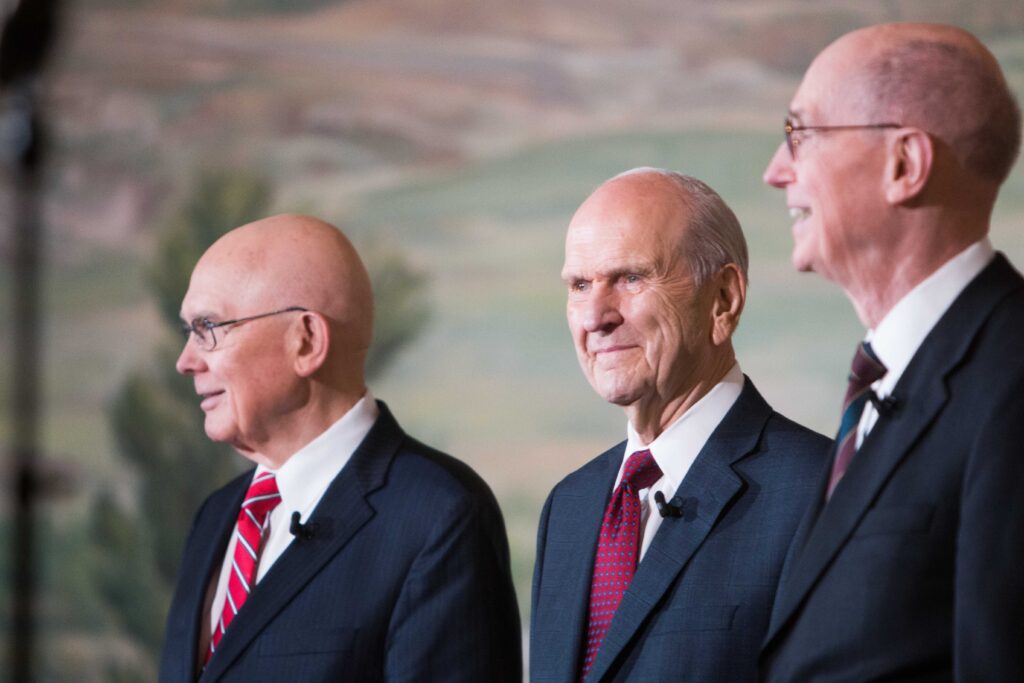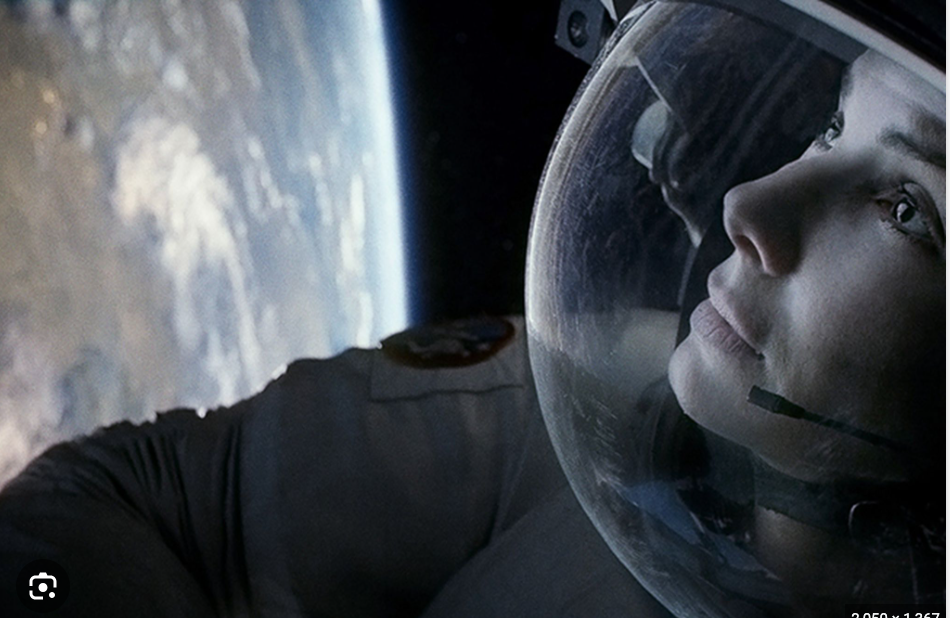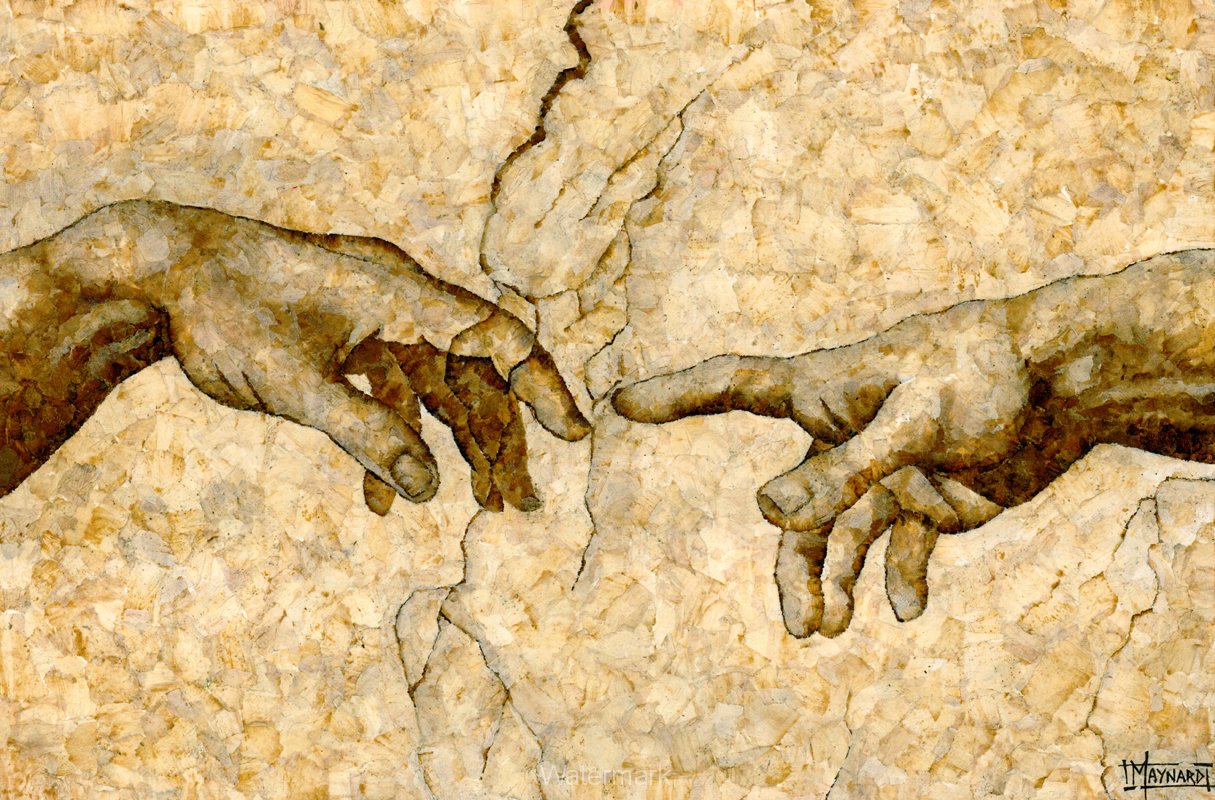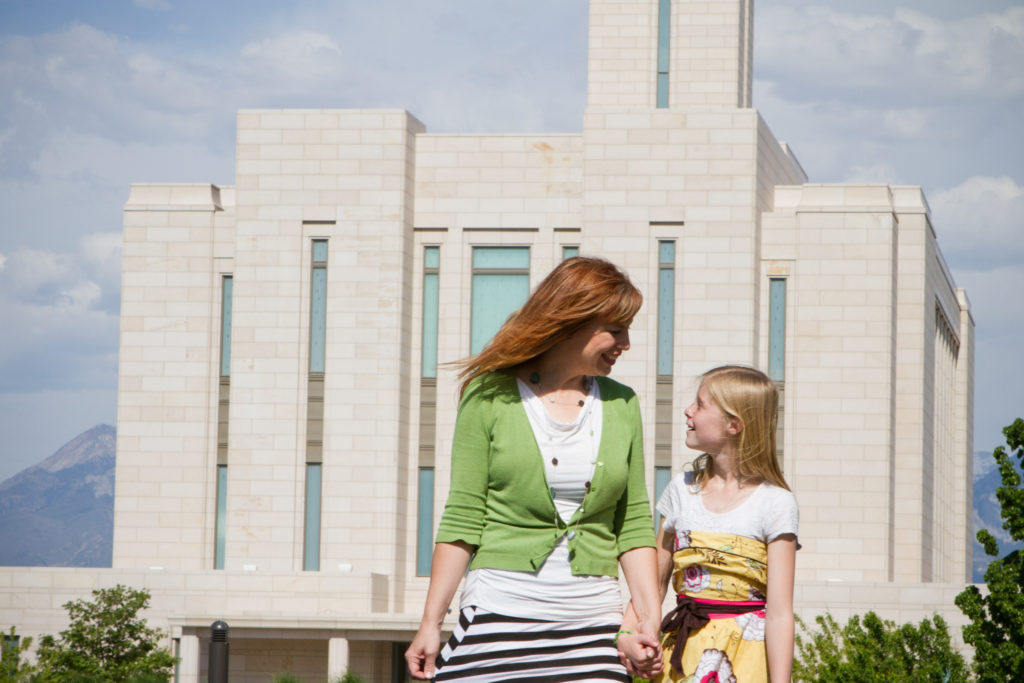Obey gravity. It’s the law…?
Dear Readers:
I originally wrote this post in 2014. Oh, how the times have changed! Now, in 2023, I include this addendum to provide clarity regarding expanding definitions (along with their specialized lexicon) of gender, gender identities, fluidity, etc., that claim to be definitional subsets of womanhood and feminism. Who would have have thought that defining a man and a woman would become so politically and socially controversial in present-day Western societies? For purposes of clarity and in alignment with The Church of Jesus Christ of Latter-day Saints, this post well remain in its usage of gender definitions contained in “The Family Proclamation.” To read the rest of this addendum, see the end of this post.

“Houston, do you copy? Are you there? Anyone? Do you hear me? Please copy. I am off structure, and I am drifting! Anyone? Do you copy? I’m detached! I can’t breathe! I’m spinning!! What do I do? WHAT DO I DO?!” — Dr. Ryan Stone (played by Sandra Bullock) from the movie “Gravity.”
Talk about a conundrum. She’s an astronaut hurtling through outer space in an untethered spin—drifting further away from her spacecraft (and Earth) into the dark cold empty void. There’s nothing she can hold onto, nothing to stop her trajectory, nothing for her to push or pull against. There’s no one to hear her voice, no one with whom she can connect. Her terror becomes our terror as Gravity excruciatingly juxtaposes the hostile vast universe against our fragile human selves. One movie critic aptly observed, “That everything that lives and everything that has ever lived should hang suspended in the midst of such emptiness is a realization so daunting and profound that it can turn an atheist into a religious person and a religious person into an atheist. Such spiritually inspiring and destabilizing realities form the undercurrent of Gravity” (LaSalle, 2013, SF Gate, para. 6).
What’s my point? As Latter-day Saints, Dr. Stone’s gritty voyage home mirrors our own as we navigate this turbulent mortal existence. Grit runs through our Latter-day Saint veins. Our pioneering foremothers’ “spiritually inspiring and destabilizing realities” included societal oppression and persecution, homelessness, and plural marriage. Talk about guts and grit—these women owned it. Today’s Latter-day Saint women show our own grit as we navigate ourselves and our families through an increasingly secularized, sexualized, fragmented, and politicized society. Unfortunately, we see another increasingly destabilizing reality within the ranks of our sisterhood (and presently within the general membership of The Church of Jesus Christ of Latter-day Saints).

“‘Mission Control’ in Salt Lake City, do you copy? Are you there? Do you hear us? Please copy,” pleads a group of Latter-day Saints who agitate for priesthood ordination and “gender equity” within the Church.

How do we define and/or implement ideas such as “gender equity” within society and in the restored Church of Jesus Christ? Does gender equity include the innate right of priesthood ordination of women (or members who are gender non-conforming)? Feminist agitators desiring priesthood authority have been around for at least 100 years. But, the invention of the Internet changed everything. Grass-roots activism is now much more widespread, effective, and efficient through social media platforms. Furthermore, information (whether true or false) regarding The Church of Jesus Christ of Latter-day Saints and its leaders is easily accessible through search engines. As a result of today’s ever-changing perceptions and definitions regarding gender, younger people are more inclined to accept and implement concepts such as “gender sameness” or “equitable gender fluidity” as a legitimate ethos to live by, and thus codify within Latter-day Saint church policy and doctrine.

“Ordain Women” Members
I believe in the sincerity of LDS feminists and activists; they believe in the righteousness of their cause. Their painful feelings of marginalization within a patriarchal system and its priesthood authority are real. In many ways, today’s Latter-day Saints exemplify the guts and grit required of our contemporary faith. Surely, we’ve all experienced at one point or another, our own brand of turbulent “destabilizing realities” that test our faith. Some of these realities might include a faltering faith in the Prophet Joseph Smith, present-day Church officials and local leaders, patriarchy, male priesthood authority, the Church as an organization, its history, inclusivity issues, and/or its doctrine. Unfortunately, many Church members are renouncing their memberships because of these issues.

The First Presidency of The Church of Jesus Christ of Latter-day Saints
“Yes. Yes, I copy. I’m drifting!!” — Dr. Stone breathlessly informs the more experienced astronaut, Lt. Matt Kowalski (played by George Clooney.)
“What’s your position?” he asks.
“I don’t know!!”
“Give me a visual!” he responds.
“I told you!! Nothing!! I see nothing!! Her panic rises.
“You need to focus on anything … the ISS (International Space Station), the sun (or the Son?), and the earth. Give me your coordinates!!”
“I don’t know!!!”
So, what’s a woman (or any individual) to do? As an astronaut untethered to her spacecraft (or a Latter-day Saint untethered to her faith), the scenario is daunting. (And don’t we all feel untethered to our faith at times?) Eventually, our movie heroine figures it out and gets it right. Gradually removing her blinders of fear, presumption, and despair, Dr. Stone’s equanimity shines as she struggles through a series of heart and gut-wrenching decisions. Surrendering to her emotions is unthinkable. Thus, we cheer her determination as it overrides her panic and despair. Her triumph is ours when Dr. Stone finally concludes, “It’s time to stop driving. It’s time to go home.” Transcending her emotions had required extraordinary grit. Painfully and poignantly, Dr. Stone repeatedly personifies grace under horrific pressure. (By the time she finally reached Earth at the movie’s end, my own anxiety was kicking in.)

“Detach! Focus! Listen to my voice! You need to focus!” — shouts Lt. Kowalski.
“I’m trying! I’m trying!!” — she shouts as she desperately tries to save herself.
As an instructor of argumentation at a California state university, my directions to my students reflect Lt. Kowalski’s. I teach students how to detach or untether themselves from old mindsets. I teach them to suspend their judgment—if only temporarily—in order to gain focus and clarity. Without clarity, students can’t think critically or engage in critical decision-making. Without critical thinking, they can’t effectively argue, advocate, or defend. Suspending judgment requires students to transcend their assumptions and prejudices—in other words, they learn to recognize and remove their blinders just as Dr. Stone did. Every semester is an uphill battle: Students insist they’re not wearing blinders. They don’t need to let go. They don’t want to let go. They don’t see their reasoning as tainted or distorted, thus many take offense at being challenged. Others take offense when I ask them to challenge the status quo or their own principles. They often become indignant — with me and/or each other. “Listen to me,” I tell them. “You need to focus! Letting go is dirty work. It requires self-discipline, self-vigilance. Letting go means discovering your vulnerability to “safe” but often false notions. You’ll discover new ideas along with the dead-end ones.” It’s a scary process.

“You’ve got to be kidding me!! YOU’VE GOT TO BE KIDDING ME!!! — screams Dr. Stone. After a series of life-threatening calamities, she made her way to a space station and boarded the parked space shuttle to fly home. Only to discover its gas tank is empty.
Talk about a dead end for Dr. Stone! (Sitting in the theatre, the audience groaned in our frustration along with Dr. Stone.) However, her dead-end isn’t really dead. Her circumstances force Dr. Stone “to get it right” by creating a new mindset in order to create a new beginning. The movie thrives on this theme. So it is with my students. Like Dr. Stone, most of them “get it right”—-but only for a while. Most students (and young people) don’t yet realize one of life’s hardest truths: They are clueless as to how many times they’ll have to repeat this process time again throughout their lives. Every new mindset, idea, and experience requires choices. And every choice requires this critical thinking process. Like Dr. Stone, my students think they’ve made it and they’re all done. They’ve overcome a mindset or an obstacle—only to encounter another. Here’s another hard truth: This painful process becomes increasingly grueling in proportion to our awareness; our awareness of how our choices affect our lives and the lives of others. Thus, the theme of our life’s journey: Navigating through and around while confronting and overcoming our individual obstacles. Successful navigation by aborting mindsets and behavior takes guts and grit.

In my life, I’ve had to unlearn or “abort” many mindsets. (Like the ones I just discussed in “my detour.”) I’m always in a state of unlearning and relearning. I’ve had to carefully examine and then unlearn some concepts taught to me in college and also taught within the LDS Church. Well-meaning professors, local Church leaders, and ward members had their own definitions and expectations of womanhood and gender roles that negatively impacted me. (Now, I let God be the ultimate definer of my identity and womanhood.)

As mentioned previously, I had ironically discovered back in graduate school that applied concepts from critical theories regarding women, womanhood, and other specific gender identities can be just as constraining, universally oppressive, authoritarian, and totalitarian as any gender constraints within Christianity and/or within the Church. For further clarity, I offer two additional and specific examples:
- Some of my female students and young colleagues have confided to me their guilt in wanting to be married and have children. They feel extremely pressured by the feminist ethos to have a successful career. To rely on a man in any way is akin to oppression or even “sin.” They speak in apologetic tones of their desire for marriage and children—and in that order. (Talk about a “destabilizing reality.”)
- As a graduate student in 1997, I experienced a turbulent ride in the form of a Feminist Studies class. Serving as the self-appointed “rescue and recovery” team, my female professor and fellow students attempted to free me from “Mormonism’s oppressive patriarchy.” Instead, they unknowingly created a hostile learning environment for me. Their moral conviction and sense of righteousness suffocated me; the more I defended my religion, the more indignant they became. By the end of the semester, I was exasperated and exhausted. “Look,” I told them, “if I’m ok being ‘oppressed’ by Mormon patriarchy, then why can’t that be ok with you?” I told them that in their well-meaning attempts to free me from my “internalized mysogyny,” they had become “the oppressors.” The professor had written and published extensively about emancipating women. She had coined the phrase “emancipatory oppressors” in her writings. Consequently, I used this phrase to describe the hostile classroom climate my professor and fellow students had unknowingly created for me. In other words, in their efforts to save me from my “patriarchal Mormonism,” they had foisted their own brand of moral imperatives and expectations upon me. As a result, I felt demeaned and isolated. To their credit, they acknowledged my feelings when I verbally expressed my feelings. But the underlying hostility remained. The process of removing one’s own blinders in attempts to truly see and comprehend underlying ignorance and/or hypocrisy is a painful process.
“Astronaut is off structure!”

“How did you get here?” — Dr. Stone to Lt. Kowalski
I now pose this question to you, dear readers: What would happen if feminist agitators within the Church successfully changed Latter-day Saint Church policy? What would this scenario look like? (This scenario also becomes increasingly complex when ever-expanding facets of gender self-identities are added to the equation. Also, inclusivity by means of same-sex sealings would create its own dimension—not to mention individuals who identify as “gender fluid.”) But for now, let’s examine the “ordain women” line of reasoning. Surely, a seismic shift would inevitably turn the Church and its doctrine upside down. Sooner or later, LDS feminists would have to acknowledge the concept of female ascendancy which would have to underpin every fundamental tenet of The Church of Jesus Christ as Latter-day Saints and Christianity, in general. In other words, the ethos of “gender equity” and “inclusion” would require a new foundational framework in terms of the Godhead, a gender-free Savior, and a gender-free Satan; all the key figures are male. (And to be truly inclusive of gender identity, we would have to label them as “self-identified” males.)

“I’m spinning! I have no GPS!” – Dr. Stone

Let’s look at this scenario from another direction: What if we include the Quorum of Twelve Apostles in the decision-making process? But again, they’re all men. So, what if the Quorum of the Twelve was composed of males and females? Again, how would the Church choose female apostles? This line of reasoning leads us back to square one: Any change or approval would have to go through the Prophet. But, remember, he’s a man. We could build an argument around the idea that a female apostle would eventually ascend to preside over the Church despite the Church’s patriarchal and male origins. However, Jesus Christ (as the head of the Church) is still a male. God the Eternal Father is still a male. (We could argue that Heavenly Mother is “at one” with Heavenly Father, thus “God” could be both male and female.) The Holy Ghost is still a male. Even if a Heavenly Mother is included as a separate entity in the Godhead, she would still be outnumbered 3-1 by males. Perhaps I sound over-the-top or over-reaching in my conclusions. But I don’t think so. Again, 21st century definitions of gender equity (but even then ONLY in regard to two sexes—male and female) require—at the very least—these fundamental conclusions.
Some LDS feminists claim that ordaining women is not about “sameness.” One website proposes “equality is not about sameness … it’s about “removing obstacles to access and opportunity” within the Church. I respectfully disagree. This proposition would model sameness. How else could we define our role as women unless we juxtapose it to the male gender model or approach? What other model is there? There isn’t any at this present time. (Well, no divinely created models that we know of or have access) Thus, women (and self-identified women including all present and future gender identity definitions) would have to fashion or create their very own models. (Sounds good in theory—to a point.) Designing our own model/s would require us to fashion our own “gender equitable” divine origins along with our own historical narratives. We would have to find a way to include these narratives in scripture. We could not rely on God to define our model because He’s male. Ultimately, women (including all gender identities) would have to design their own goddesses, saviors, and angelic figures. And using gender fluidity models could be infinite in number.
Again, this idea sounds appealing. But, how would we, as fallible human beings, be able to do this? Talk about social constructs. Hopefully, our Heavenly Mother would show us the way. But how could we tell if our inspiration came from a Heavenly Mother or our Heavenly Father? And the Holy Ghost is male. So how could we be sure our inspiration isn’t tainted by maleness and patriarchy? We can’t, and it would.

Finally, I propose the idea that words like “access,” “obstacles,” and “opportunity” also fall under the same thorny totalitarian and subjective constraints I discussed previously. These ideas cannot be clearly defined by limited human perspectives and contexts. For this reason, I will not attach or place my faith in activists and agitators within the Church. They, along with their doctrine, are too imperfect, too subjective, and too fallible. And, truthfully, I agree that because our Church leaders are human beings, they too, are susceptible to the frailties of human nature and biases. However, my belief in their apostolic and prophetic mantles coupled with my access to God through personal revelation, serves to bolster my faith as solid and enduring.
I respect anyone who has the courage of their convictions and that includes those with whom I have ideological and political disagreements. I respect and mirror the concerns of others who advocate for the dignity and rights of all humans. Still, every one of us would do well to remember that we all wear our own brand of blinders in terms of our differing approaches and methods in identifying and finding solutions to societal and global problems and issues. It takes lots of personal humility for any of us to understand and accept that none of us have all the answers to societal ills and injustices. Jesus Christ is the only being who has the wisdom and ability to solve the world’s problems.
“Detach! You must detach from that arm (the mechanical arm of the disabled space station). If you don’t it will carry you out too far into space! Focus! Listen to my voice! You need to focus! — Shouts Lt. Kowaslski at Dr. Stone — as the mechanical arm grips her in a death spin.

Wouldn’t it be easier to just let go and detach? Untether ourselves from human fallibility, negative or angry or self-serving paradigms, power struggles, group self-loathing, tribalistic groupthink, distorted definitions, cynical assumptions, our pride, our need to be right, our need for worldly approval, self-aggrandizement, or our need for attention and accolades? Unlearn and relearn! Like our pioneer foremothers and forefathers, can we muster up our guts? It’s hard. It can even be humiliating. And it’s also oddly empowering. Because in transcending our perceptions (individually or collectively), we discover that our view of the world is not the view of the world. And we’re reminded that human perspectives are not God’s perspectives. Despite her intense suffering, Dr. Stone learned this lesson. She let go. Again and again. And, in letting go, she saved her life. Do we need to let go to save our spiritual selves?
“You’re breathing too hard! Sip the oxygen! Don’t gulp it!” — advises Lt. Kowalski to Dr. Stone due to her limited oxygen supply.

In writing this very long post, I’m going to switch gears and bring Jesus Christ and His atonement into this discussion. I understand the desires of agitators and activists within the Church in their focus on empowering marginalized voices, along with their desires for group representation within the ranks of Church leadership. I can understand the power and validation behind an equity-based matrix of identity representation throughout Church leadership. Yet, there is a tipping point when the intense and relentless focus on achieving the equity matrix of gender, ethnicity, and “able-ist” representation in Church leadership would create too much weight potential and thus eclipse or deny the fundamental LDS doctrine of “one being called of God.” I also believe this matrix model is unsustainable due to its complicated and ever expanding fluidity and intersectional markers pertaining to gender and language inclusivity. In fact, cracks are beginning to form within some of the underpinnings of intersectional theories as society attempts to integrate them into institutional practice. I would suspect that the whole social apparatus (with its continual fluidity and splintering) would eventually implode on itself and thus defeat the overall message of the gospel—along with the gospel’s clarion call which beckons each individual (thus overriding specific groups) to come unto Christ and to be redeemed through His atoning sacrifice. Ultimately, working out our salvation is an individual and deeply personal journey. And that’s our Savior’s intention for us; building an intimate relationship and binding ourselves to Him.

Additionally, feminist agitators make the specific claim that the Church perpetuates “institutionalized powerlessness” against women. I get their point but, ultimately, I disagree. There’s a huge difference between limitless personal spiritual empowerment versus institutional empowerment through Church leadership via female priesthood authority or using the matrix model of representation. (And, as an aside, female priesthood authority is already exercised in the temple, and through my temple covenants, I have attained—and will continue to attain—increased amounts of priesthood power to help my spiritual growth and progression; and in so doing help the progression of my family members, my children, and my posterity. Furthermore, I have no doubt that the Restoration, as an ongoing process, will continue to reveal ordinances and doctrines available to all peoples.
Sapping our spiritual and emotional strengths and resources in attempts to smash the Church patriarchy seems counterproductive. As I said earlier, our intense fixation (and I include men and all gender identities) on identity markers (with many markers based on immutable physical characteristics) veers from our ultimate source of power: Our Savior Jesus Christ. Hence, instead of feeling joyful healing and powerful promotion through the Savior’s healing atonement, we inevitably feel victimized and powerless.
Further still, our victimization can easily morph into a negative “power source” serving to undermine and defy the concept of empowerment and/or personal power through our individual relationship with the Savior. As a result, feelings of anger, frustration, and sorrow eclipse peace, joy, and love. I believe that direct power and promotion coming from Jesus Christ as our source has exponentially more power, more light, more force—more everything than any brand or form generated from human-made or socially constructed and deconstruction rooted in critical theories with their ever-changing definitions of feminism and/or gender identity. Viewing the Church, its message, its mission, and its leaders through the narrow lens of equitable representational in “leadership and positional authority” misses the mark and dilutes the pure message and essence of the “good news” of the gospel. Perhaps other LDS women (or members in general) see no distinction between these two concepts, but I surely do.

“I have a daughter. Tell her I’m not quitting!” — Dr. Stone’s request to Lt. Kowalski after learning that he will not survive their ordeal. Her young daughter had recently died, thus Dr. Stone wants him to deliver this message to her daughter when he passes through death’s door.

In the rest of this post, I’ll discuss and re-emphasize our own oppressive tendencies within the realm of the Church organization and its community. I agree with feminist agitators and gender identity advocates that forms of oppression do exist within the Church. In this post, I have proposed that a feminist form of totalitarian or universal “one-size-fits-all” feminist approach is not a workable model, nor is a gender fluidity intersectional matrix a workable model pertaining to representation within the ranks of Church leadership and Church doctrine.
On the other hand, any long-time Latter-day Saint knows that the past universal cookie-cutter approach regarding women within our LDS community doesn’t cut it either. Thankfully, since the time I first published this post, we’ve seen changes in the language and approach coming from the First Presidency. Particularly, President Nelson’s more inclusive approach as brought significant changes.
As I stated earlier, attaining a relationship with Christ coupled with individual spiritual progression is a deeply personal journey. Like I said, I had to detach and “unlearn” a lot of false and suppressive “doctrines” that had perpetuated in Church meetings and often in our Church community. And that detachment was painful and protracted. Akin to the well-meaning but oppressive women in my Feminist Studies course, individual Church members are guilty of their own brands of oppression when they knowingly or unknowingly foist their own doctrinal interpretations upon fellow Church members.

Inevitably, we, as individual Latter-day Saints, distort gospel doctrine through our personal narrow, confined lenses—and in the process oppress, suppress, and basically cause each other a lot of hurt and annoyance. During my 64 years as a Latter-day Saint woman, wife, and mother, I’ve shed a lot of tears because of destructive dogmatic opinions taught to me by fellow Church members. Unfortunately, their individual definitions of perfectionism, womanhood, and motherhood felt just as oppressive as my experiences with many academic feminists (along with critical theories’ deconstructive approach and moral pronouncements and edicts). Surely, I’ve seeded and spread my own distortions—even as I write this post. Still, I try to be very careful not to impose my own perceptions as “gospel truth” upon others.
Please don’t misunderstand me. I have always felt great love and respect for the members of the wards and stakes I’ve lived in. Their love, service, sacrifice, and friendship have sustained me and my family throughout my life. But, I’ve also realized that like any family, my ward and stake “families” were/are just as “screwy” and fallible as me, my family, and any family in or out of the Church. Knowing this, why would I allow them or anyone else to define me or my role as a woman or church member? And why would I attempt to define another sister or her role as a woman and church member? I don’t have that right. No one does—except for Jesus Christ (who is male).
Personally, I have never desired priesthood ordination. But as a young woman, I “gulped for air” while struggling with my faith. Back then, facets of Church doctrine and patriarchy threatened to suffocate it: plural marriage, priesthood correlation, patriarchal scriptural narratives, and the overwhelming disproportion of scriptural male and female role models. (Really, what Latter-day Saint woman hasn’t struggled with any one of these issues?) To avoid suffocating my faith, like Dr. Stone, I learned to “sip” during times of doubt and fear. Reading endless books on LDS doctrine or sources that criticized the Church did not help—I only felt worse. Therefore, I went directly to the source: God. At first, my angry sulky approach to Him obscured His response to me. But, with great effort, I forced myself into a new mindset through the crucible of attaining enough humility to let go of my personal pride. Relief (oxygen) through the Spirit came when I morphed my indignation into a humble, “thy will be done” attitude and prayer request. No visions nor heavenly beings appeared to me. The Spirit simply moved me to greater faith, increased understanding, and peace—in other words, I received just enough oxygen to get me through.

In my endless process of unlearning and relearning, I’ll share a few more observations:
- The more I learn the less I know. I take great comfort in this.
- Having more questions than answers is part of our mortal experience.
- Not knowing is okay. I’ve learned to live in and with uncertainty. I call it “faith.”
- Our pride claims the uncertain to be certain.
- Without humility, we tend to “know” all the answers.
- “Know-it-alls” have to be right and thus never make mistakes. That’s too much work for me, and I can’t do it anyway. It’s much easier to say, “I don’t know.”
- Acquiring knowledge is not equivalent to acquiring wisdom. And it’s not as valuable.
- We all tend to state our opinions or world view as factual.
- Open discussion about sensitive and difficult topics that question Church authority is not inherently bad or evil. Intent, however, is the key. Too many people want to contend rather than discuss. By the same token, open discussion regarding progressive social justice ideology and it’s place in the Church should be allowed without knee-jerk accusations of being “hateful” or “bigoted” for questioning and/or disagreement.
- Questioning doctrine is not equivalent to apostasy. (Yes, I know—the slippery slope argument. But healthy questioning is possible without sliding into Hell.) This also applies to social justice moral imperatives; people who disagree with social justice ideologies are not heretical, evil, or “bad humans.”
- I have confidence in my Heavenly Mother. I feel confident that she was my teacher and mentor in my pre-mortal life. Now, in mortality, I have the opportunity to develop an intimate relationship with my Heavenly Father.
- Heavenly Mother is a powerful intelligent being. I’m sure she can take care of herself without having to hide behind Heavenly Father. So please don’t tell me she’s invisible or unknown to us because Heavenly Father “is trying to protect her.” I’m not buying it.
- At some point, we will come to know our Heavenly Mother once again. I wonder if she made the choice to remain hidden. Perhaps, she isn’t hidden, but “at one” with the Father.
- I don’t need “the Brethren” or the priesthood to validate me. My testimony doesn’t require it. I do need Jesus Christ to validate me.
- My temple ordinances and my staying on the covenant path give me ever-increasing priesthood power.
- There’s a difference between waiting and waiting well. I’m learning to do the latter.
- Men are not “the priesthood.” Thankfully, more people have stopped referring to men in that manner.
- The only times I truly listen and completely respect my husband’s words to me are while he’s pronouncing a priesthood blessing upon me or my children. (Yes, I know I sound like a terrible wife.)
- Now, I’ll sound even more terrible. Without his priesthood authority, my husband would not be as spiritually savvy and aware as I am. No brag, just fact—and he agrees with me on that.
- I’m obviously not the Prophet, but I have acquired the spiritual gift of prophesy. And through my faith, I can obtain other “gifts of the Spirit” listed in the New Testament, The Book of Mormon, and in the Doctrine & Covenants. These spiritual gifts are available to all. They further empower us as women, wives, sisters, and mothers.
- Spiritual and institutional empowerment cannot be obtained through contentious mindsets or behaviors. However, the humble “prayers of the righteous availeth much.”
- I can pray earnestly and humbly about any doctrine, and the Lord will respond and quiet my fears. Now that’s empowerment!
- The Lord will not reveal Himself to a blabbermouth.
Learning the above was and still is akin to torture. Talk about creating new mindsets. But the dirty hard work was and continues to be worth it. Because here’s what I know for sure: I no longer care if the Church is “oppressively patriarchal.” I’m not leaving it. I’m staying loyal to it. Jesus Christ heads this Church of fallible people. And that’s good enough for me.

“Hey, Matt? Since I had to listen to endless hours of your storytelling this week, I need you to do me a favor. You’re gonna see a little girl with brown hair. Very messy, lots of knots. She doesn’t like to brush it. But that’s okay. Her name is Sarah. Can you please tell her that mama found her red shoe? She was so worried about that shoe, Matt. But it was just right under the bed. Give her a big hug and a big kiss from me and tell her that mama misses her. Tell her that she is my angel. And she makes me so proud. So, so proud. And you tell her that I’m not quitting. You tell her that I love her, Matt. You tell her that I love her so much. Can you do that for me? Roger that.” — Dr. Stone to Lt. Kowalski
In our crisis of faith do we frantically search for our own “red shoe?” Do we use up our precious “oxygen” and energy in our search––only to discover it was in plain sight all along? Do we need to examine what’s floating around in our individual and collective orbits? Do we need to detach? I propose we take off our individual blinders and detach from diversionary tactics. Detach from our indignation by unlearning human-made presumptions. Detach from the wreckage of anger and sadness. Detach from destabilizing forces and constructed realities. Detach and protect ourselves from orbiting debris of angry dissension. Detach and tune out negative distracting static.

What’s more, we might consider this vital fact: What we orbit, our children orbit. My sons’ and especially my daughters’ attitudes regarding women’s power (or lack of it) among Latter-day Saints have been largely influenced by me, their mother. That’s empowering, sobering, and frightening. Recently, I listened to one sister from the “Ordain Women” organization tearfully describe “the sadness” of her 7-year-old daughter. Her little girl is sad because she and her mother lack priesthood authority and therefore “power” in the Church. I respectfully ask this mom: How is it possible for a 7-year-old girl to be sad about adult concepts unless her mother tells her to be sad? Faithfulness or dissent is particularly potent pertaining to our role as parents. Dr. Phil often tells us that the biggest influence in a child’s life is the same-sex parent. So mothers, what kind of role model are we for our daughters? Is there such a thing as dissenting faithfulness or faithful dissent? Are those concepts an oxymoron? I don’t know. However, I do know this: As mothers, what we decide to tether ourselves with and orbit around determines our legacy—and more often than not, our children’s legacy.

“Where’s home to you, Dr. Stone? Is there somebody down there or looking out for you?” — Lt. Kowalski
So how do we “get it right?” How do we “stop driving and get home?” How do we transcend our fear, frustration, or anger to maintain our faith? How do we muster up guts and grit and get a grip with grace? If we decide to detach and let go, to whom do we attach ourselves? It’s simple. Jesus Christ. And I don’t care that He’s male. When Christ atoned for our sins, He atoned for the sins of every single repentant individual regardless of their gender or ethnicity. So because He’s familiar with both male, female, and all types of gender induced suffering, He can perfectly empathize and succor us. Period.
I can’t say enough about our Savior!
- He is our home.
- He is to whom we tether ourselves.
- He is our compass, our light, our pilot.
- He is an equal opportunity instructor. He is no respecter of gender, age, or ethnicity.
- He is our role model because He is the essence of male and female perfection.
- He fills and controls the universe, so He can fill the void in our own universe.
- He is our source for spiritual and emotional empowerment.
“Focus.” Dr. Stone overcame her initial panic each time she focused on Lt. Kowalski’s voice. We, too, can stop our fears from grinding away at our faith when we focus on our Savior’s voice and tether ourselves to Him. Yes, His voice of rescue is patriarchal, male, and, at times, commanding. But in the end, who cares? Does Dr. Stone begrudge her rescuer for being male? No. And I believe all LDS women will eventually reach the same conclusion in regards to patriarchal priesthood authority if our faith is to survive and thrive. The gender of Heavenly Father and Jesus Christ (along with their patriarchal, male-dominated priesthood, lineage, and Church) is ultimately a non-issue. A greater or better source of gravity other than Jesus Christ simply does not exist. Therefore, I will obey THE source of gravity. It’s the law. He’s the law.
If you’ve read this far, I thank you! Mission accomplished … I’m home.
Julie
Pluckrose, H. & Lindsay, J. (2020). Cynical Theories: How Activist Scholarship Made Everything about Race, Gender, and Identity. Pitchstone Publishing. Durham, North Carolina.
Addendum, con’t:
Since its origins in 1848, the American feminist movement has expanded its scope in defining womanhood while working to establish equal (now “equitable”) societal power structures including political, economic, cultural, educational, etc., for women. During the 1980s and 90s, the definition of feminism became more inclusive or “intersectional” with its focus on the “lived experiences” of society’s historically marginalized women of color. Intersectional feminism declares that:
Intersectionality recognizes that it is possible to uniquely discriminate against someone who falls within an ‘intersection’ of oppressed identities—say Black and female—and that contemporary discrimination law was insufficiently sensitive to address this”
(Pluckrose & Lindsay, p. 56).
Since 2012, the transgender movement has gained significant momentum and influence in producing cultural shifts and public policymaking by broadening the definitions of male and female. A transgender person is someone whose gender identity differs from their biological sex at birth. Many are diagnosed with gender dysphoria which they may seek to alleviate through transitioning, and perhaps adopting a different name and set of pronouns. Much of the North American cultural shift seems to be focusing on the definition of “woman” or “female.” Today’s feminism includes the LGTBQIA** community and considers transgender rights as an integral part of intersectional feminism. In March 2021, the American National Organization for Women (NOW) stated:
Today we remind the world that trans women are women, trans girls are girls, and that non-binary and gender-nonconforming people are valid in their stated identities . . . several states have launched an all-out assault on trans rights, from bans on gender-affirming care to prohibitions against trans women and girls participating in sports according to their gender. We at NOW know how essential health care-–like gender-affirming services-–can be twisted and politicized anti-choice politicians use the same tactic against abortion care. NOW stands with the trans community in solidarity to fight these vicious, discriminatory attacks.
NOW is dedicated to achieving intersectional equality to ensure no population feels forced to live in the shadows. Visibility matters. We all deserve the same access, freedoms, and opportunities to embrace our true selves. And we must respect each person’s right to bodily autonomy and self-determination – regardless of their gender identity. On this important day, it is essential that we work to protect trans people of all identities and origins”
(https://now.org/media-center/press-release/now-celebrates-transgender-day-of-visibility/).
More specifically, the transgender movement questions the societal assumption that heterosexual and cisgender (meaning a person’s gender identity corresponds with the sex that person was “assigned at birth”) are or should be considered “standard” in society and within its institutions—including the science and medical establishments. More specifically, transgenderism includes many gender identity markers such as “gender fluidity.” Gender fluid means a person can embrace or have an adaptable nature to the concept or definition of gender identity and gender expression. Thus, a person can be one gender, multiple genders, or no gender. “Gender neutral” is often a term used to describe people of any gender. Neopronouns may be words like “ze” and “zir,” or “fae” and “faer,” or other combinations rather than using the pronouns “him” or “her.” Gender spectrum markers or identifiers include not only gender fluid, but additional markers such as two-spirit gender, third gender, agender, polygender, pangender, omnigender, genderqueer, transgender, intersex, gender expansive, gender expression, and other identifiers.
Here is a sample of gender inclusive policies in American universities (Buffalo University at New York’s website is fairly typical of most North American universities and colleges):

